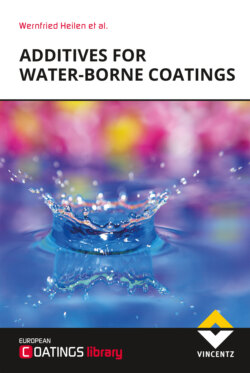Читать книгу Additives for Water-borne Coatings - Wernfried Heilen - Страница 60
На сайте Литреса книга снята с продажи.
3.2.2.5Bridging stretching mechanism
ОглавлениеThe prerequisite for the bridging stretching mechanism is a positive bridging coefficient. The mechanism also works in thick foam lamellas. A defoamer droplet penetrating the lamella causes bridging of the latter. In so doing the droplet becomes biconcave with the smallest thickness in its middle. Mechanical stress on the lamella, e.g. caused by uncompensated capillary forces, causes elongation and further thinning of the oil droplet. Once the droplet reaches a state when it can no longer compensate for the mechanical stress, it breaks, causing destabilisation of the lamella and consequent collapse of the foam bubble.
Figure 3.7: a) Bridging of a defoamer droplet with a positive bridging coefficient, b) and c) Stretching of a defoamer bridge till collapse
Figure 3.7: a) Bridging of a defoamer droplet with a positive bridging coefficient, b) and c) Stretching of a defoamer bridge till collapse
Figure 3.7: a) Bridging of a defoamer droplet with a positive bridging coefficient, b) and c) Stretching of a defoamer bridge till collapse
The prerequisite for the bridging stretching mechanism is that the defoamer droplet is deformable. Due to their inflexible geometry hydrophobic particles cannot defoam via the bridging stretching mechanism [5] [6] [8].
